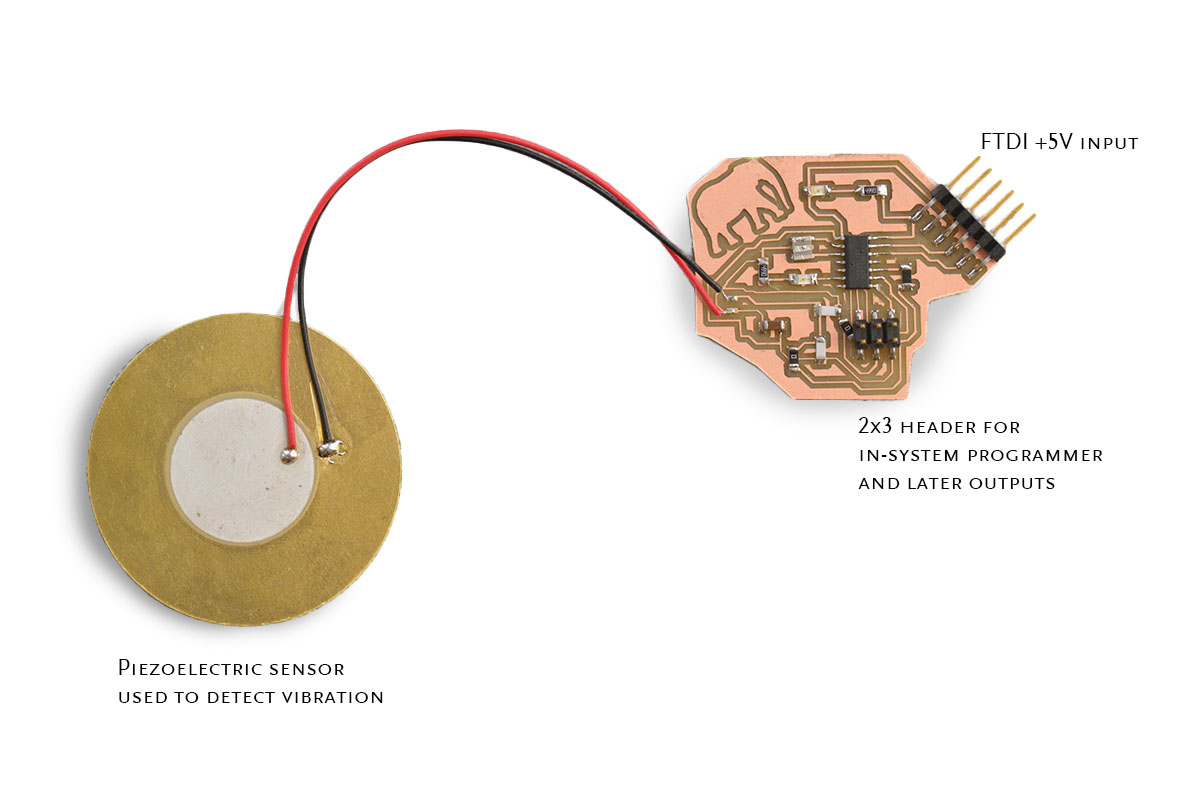Pacinian Corpuscle
ELEPHANTS are the world's largest living land animals. We think of them as somewhat lumbering creatures, but they are extraordinarily sensitive to low-frequency (under 20 Hz) stimuli, including vibrations through the earth. In a way, they seem to 'hear' through their feet. They do this, we believe, in part through lots of mechanical sensors called Pacinian Corpuscles. (Not named after Al Pacino.) Here is what they look like in cross-section:

^ This micrograph is from this anatomy paper by Weissengruber and others. Here is another related paper by Caitlin O'Connell-Rodwell.
If we might want to detect similar vibrations, how could we do that? I was inspired by David Houlding's implementation of a sensitive piezo-based vibration detector.
The amazing piezo element can be attached to an oscilloscope and tapped- you'll see voltage spikes of up to 70+ volts! This simple device can detect very subtle vibration events. I should say that it does not work by exact principles in an elephant's foot, and isn't inspired by the mechanisms in an elephant foot: rather, it is a way that we can recreate an element of this sensitivity.

Here is the circuit I decided upon, again referring to elements of David Houlding's design.

Component spaghetti.

Untangled spaghetti... board layout with two jumper situations.

Here are the two pins the design will utilize to collect data (PA3) and readout an LED (PA7).

Traces and outline ready to send to Modela milling machine via fabmodules.org.

Milled board. Note some annoyingly thin traces at middle left, perhaps due to board not being very firmly taped down to work surface.

Stuffed board complete with power and indicator LEDs.

This code was useful to explore the function of the piezo detector. Evenually, as documented in my final project, I implemented moving averages with adaptive event thresholds.

A video showing the sensitive function of the device. The red LED (near the center of the board) indicates detection events.